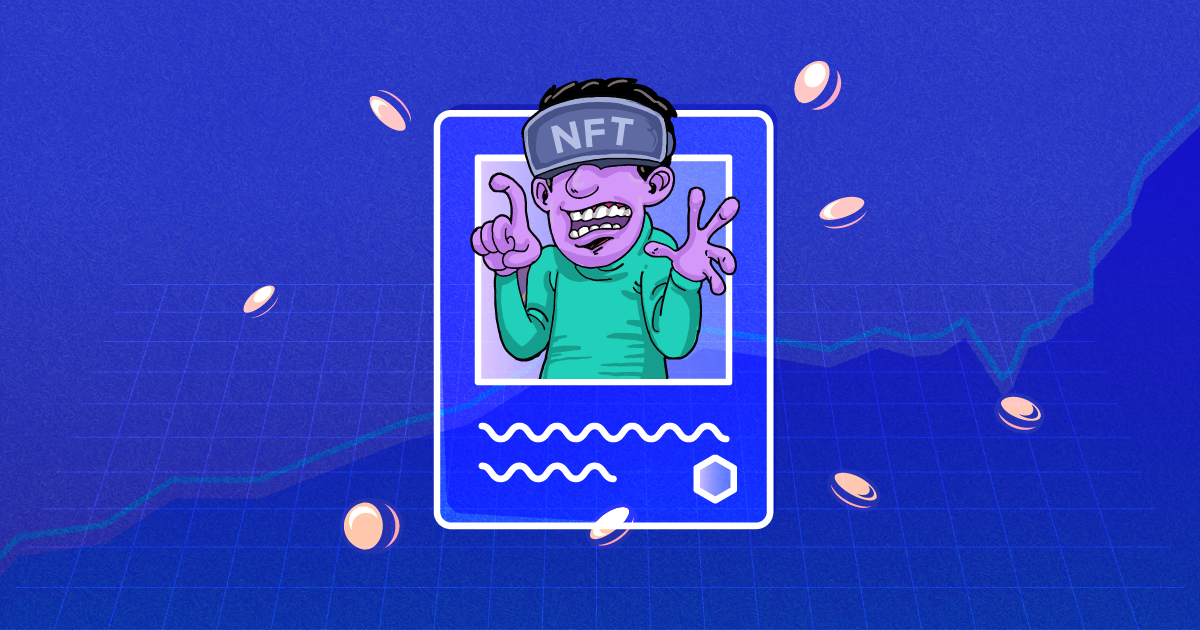What are NFTs?
Unlike crypto coins, namely, Binance, Bitcoin, Ether, Polkadot, Solano, etc., non-fungible tokens (NFT) are unique in nature. While every crypto coin of Binance or Bitcoin or Ether is identical in nature and has a limited or unlimited supply, every NFT is rare. It’s possible to buy or sell crypto coins in fractions of a unit up to 8 decimal places. However, NFTs can’t be divided into fractions, and it’s issued in a single unit or multiples of one unit.
NFTs could be issued to create digital versions of artwork, collectables, and games. To understand NFTs better, let’s compare them with train tickets – where, prima-facie, all tickets appear identical, yet the names of passengers, seat numbers, and destinations differ.
The Rise of NFTs
While the concept of NFTs was introduced way back in 2014, their popularity exploded in 2021. Last year, several sports clubs came forward to launch NFTs for renowned players and athletes. Renowned film personalities launched their own NFTs. Fashion houses, large corporates, music houses, and film directors quickly followed with their own NFT launches.
Read About: Methods to Assess the Worth and Value of NFTs
The demand for NFTs outpaced the supply, resulting in soaring NFT prices in a short time. This phenomenon attracted financial speculators into the NFT market, flush with crypto holdings. The rising popularity of NFTs brought numerous hackers into the ecosystem. According to a report released by Top10VPN – a global digital privacy and research group – cybercriminals regularly make millions of dollars in cryptoassets, NFTs included. The question, therefore, arises – how to mitigate the risk of exponentially rising NFT crimes?
Innovative Ways of Executing NFT Crimes
The NFT surge has shifted the attention of cybercriminals to newer areas of decentralised finance (DeFi) and NFTs. With the soaring prices in the NFT market, crypto-enabled crime has reached an all-time high of US$ 14 billion (~INR 10,86,46,16,00,000). Buying and holding NFTs is possible in a digital wallet, which could be hot (active) or cold (passive) in nature. So, let’s now understand the various ways in which NFT crimes are committed:
- In the NFT regime, fraudsters or scamsters have found innovative ways to victimise NFT holders and make them compromise the private credentials of their digital wallet or even sign authority via a fake NFT minting link. Some even hack into the servers of NFT issuers, NFT marketplaces (like OpenSea), social media platforms (like Discord) or crypto-wallet applications (like MetaMask) and send an email or message containing a phishing link.
- The explosion of counterfeit NFTs has resulted in the work of numerous artists’ being stolen and minted as NFTs for sale without their consent or knowledge. Worse still, they have not received any income or royalty from the sale either.
- Wash Trading: In NFT trades, anyone could hold any number of digital wallets. This has resulted in inflated NFT prices wherein sellers artificially jack up the prices by becoming buyers on the other side of the trade. According to Chainalysis – the blockchain analysis company – such trades are termed wash trading.
- Self laundering: The NFT trades could be used for self-laundering. Criminals indulge in the sale and repurchase of NFTs within themselves using tainted funds. This enables them to fabricate authentic records on the blockchain. Gullible investors then buy the washed NFTs from the criminals with white money.
- Rug Pull: Rug pull is a cybercrime whereby developers abandon the project and run off with investors’ funds after making lucrative promises to lure investors.
- Cryptojacking: Cryptojacking relates to the unauthorised use of victims’ devices for mining cryptoassets. A research report by Top10VPN says Cryptojacking is the fastest rising form of malware in 2022. Cryptojacking incidents rose to US$ 15.02 million (~INR 1,16,61,36,278) per month in 2022 compared to US$ 8.09 million (~INR 62,80,98,701) per month in 2021, a rise of 86%. SonicWall – a firewall vendor – carried out an analysis of the threat intelligence data. The analysis reflects Cryptojacking growth outpacing the general trend for malware, which has risen by just 16% in 2022.
Read About: 5 ways to protect your NFTs from being stolen
Staggering Losses from NFT Crimes: Grim statistics
The NFT crime losses topped US$ 52 million (~INR 4,03,55,53,600) till April 2022 compared with US$ 7 million (~INR 54,32,47,600), a jump of 667% over the whole of 2021 – according to a report released by
Conclusion
With the NFT traded funds catapulting 200 times and profits from the NFT trades surging 450 times in 2021, scamsters and fraudsters have made a beeline to the lucrative NFT market. NFT investors need to exercise caution or mitigate the crime risk by going through the ways of committing NFT crimes mentioned above and avoiding falling prey to such lucrative offers.
ZebPay is one of the oldest crypto exchanges and you can securely open your digital wallet with India’s fastest-growing and most popular crypto exchange resulting in a seamless trading experience. Invest with ZebPay today.

